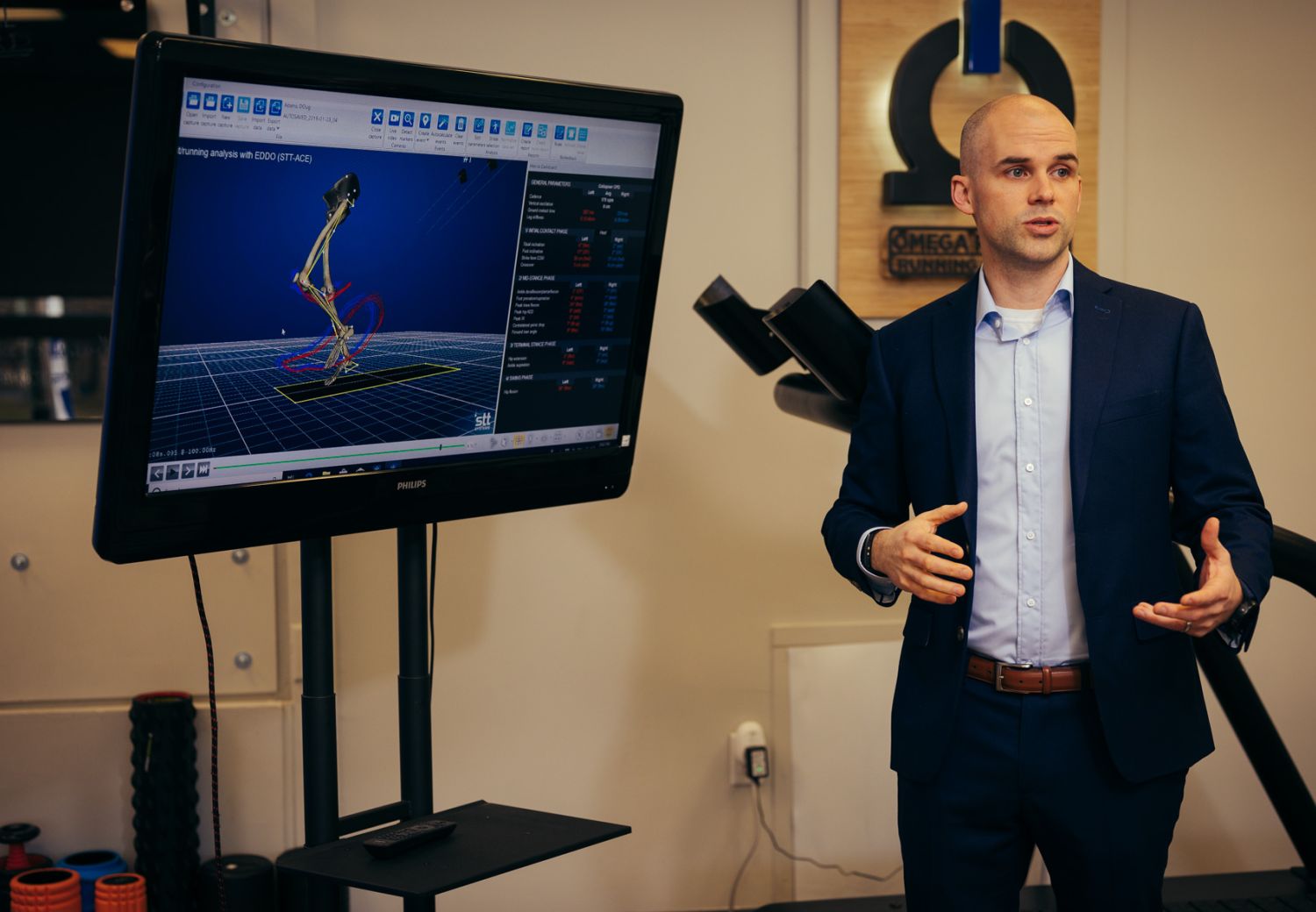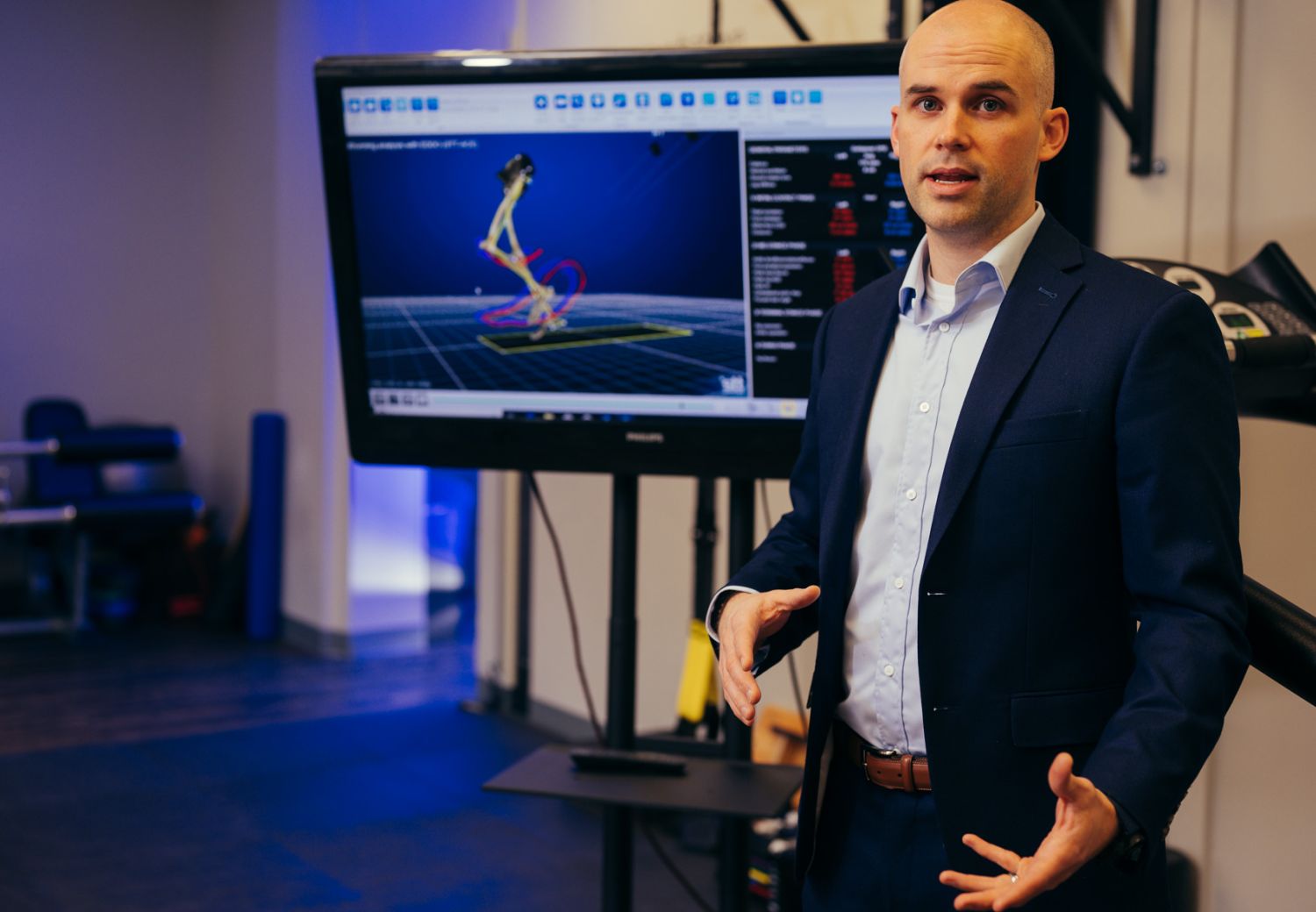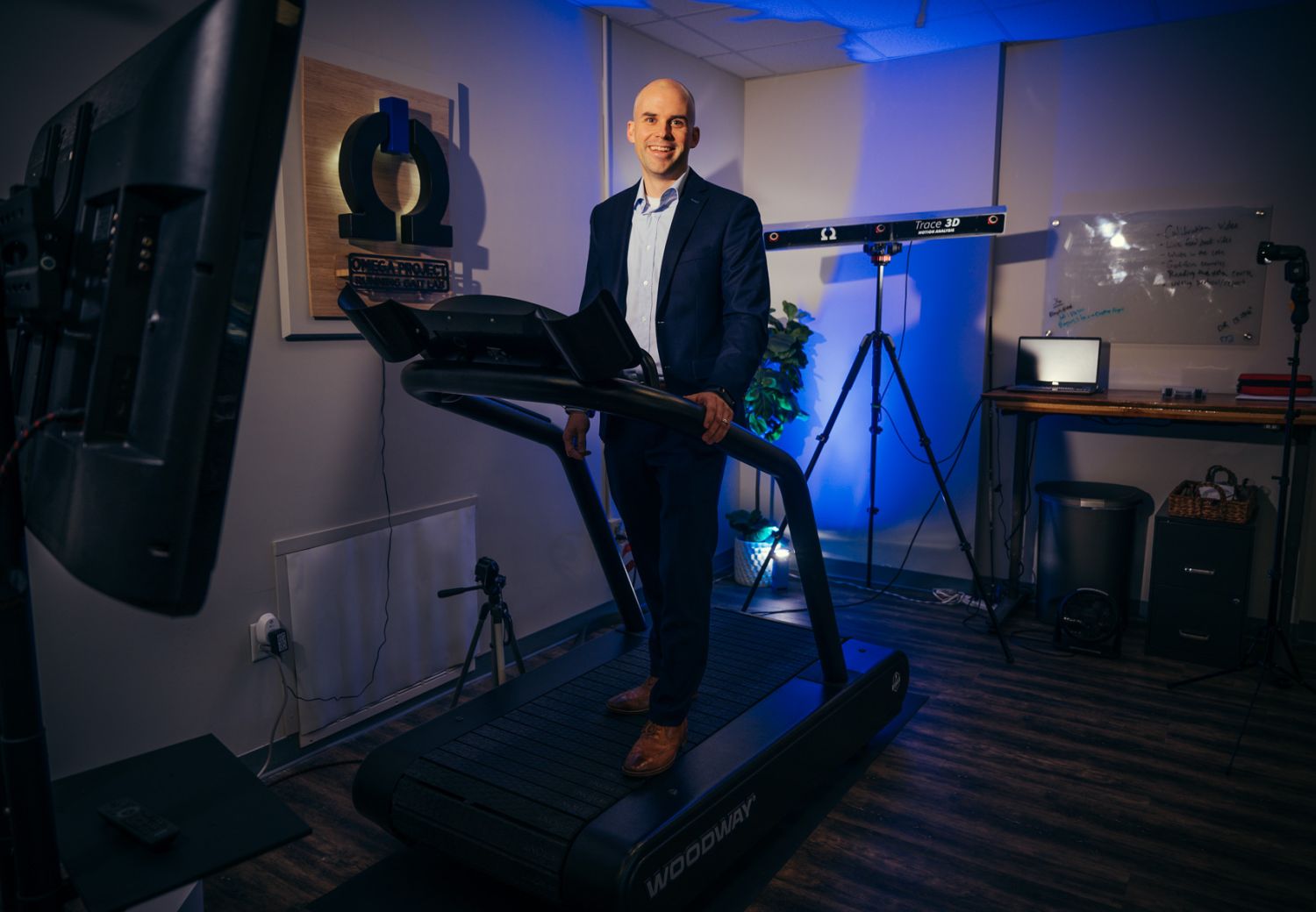Running Technology Entrepreneur
Doug Adams loves Delaware
Doug Adams
Doug Adams believes that little things can make a huge difference in helping people live healthier lives.
“What I and many others love about running is that it is simple — you just put your shoes on and go run. But it’s actually a lot more complex,” Adams shares. “There are important intricacies involved with running healthy or running fast.”
Adams designed a device called Trace 3D that aims to help runners train properly with these intricacies in mind. The program measures a runner’s “gait” — the flow of motion within each stride, and then Adams takes that data and maps it against his knowledge as a physical therapist to quickly put together a deeply customized training plan to improve form.
Adams grew up in Newark near White Clay Creek State Park where he spent his time running the trails, playing frisbee golf, and swimming. “Between my junior and senior year of high school, I started doing triathlons,” Adams says. “Then I had an English project where I decided to write about running, and I was surprised to find there is a lot of science behind running — which is effectively the oldest sport in the world. Learning all of that hooked me.”
At the University of Delaware Physical Therapy Program, Adams was able to work under two of the most renowned researchers on running in the world — Dr. Irene Davis and Dr. Rich Willy. “We have a great PT school at Delaware. It’s a great place to be injured, if you have to be,” Adams jokes. “It was there that I found a passion for running gait analysis, and through their leadership started a vision for what I am doing now.”
Adams acted quickly and strategically on his vision, creating three different companies to support healthy running form. In 2015 he started The Association for Clinical Excellence which is the educational element of his work. This was quickly followed by both Ace Running, which manufactures the Trace 3D product, and the Omega Project, which is the physical therapy clinic that specializes in endurance athletes.
“While working with student patients at UD, I found the 3D analysis incredibly helpful, but wished there was a way to have that information all of the time. So we decided to create a portable version of the technology.”
Adams partnered with STT Systems on Trace 3D, a motion analysis company out of Spain that has deep experience doing 3D-coding of motion for bicyclists. They worked together on the development of a user-friendly interface that could be easily taught. “Not only is it simple to use, it is fast — data that used to take hours to compile now takes around five minutes.”
“Delaware has been a great location for us with its proximity to so many different areas — being close to Washington D.C. when working with military contacts is critical.”
With a portable product that was intuitive, fast and a fraction of the cost of traditional 3D analysis systems, Adams quickly knew he had something useful and potentially scalable.
Trace 3D works in conjunction with the Runner Readiness Assessment to “have a look at the entire body to show at general strengths, weaknesses, and core stability,” Adams says. “We then take the information gathered by Trace 3D and can easily classify if they are an over-strider, a bouncer, a weaver, a glute amnesiac, or a collapser. From there the plan is straightforward.”
Adams says the numerous partnerships that he and his business partner Ari Kaplan have found in Delaware have been critical in connecting the dots. It was through the Horn Entrepreneurship
Program at the University of Delaware that they discovered Afworks, which is the Air Force’s program for encouraging innovation within their processes. “We realized immediately how much the military needed quick and convenient access to the data we were capturing,” Adam says.
“The number two reason for failure of the military fitness test is not being able to pass the run portion. Not to mention the rates of running-related injuries. It costs the Air Force 43 million dollars a year for people who fail out of basic training with lower leg injuries. What we have is not only a great opportunity but great cost savings.”
The Delaware Technology Innovation Program (DTIP) was critical in kick-starting Adams’ connection to Afworks. After receiving their Phase 1 Small Business Innovation Research grant, Ace Running has worked closely with DTIP to secure Phase 2.
Adams explains that the first phase is about finding the customer, and the second about testing it in a real-world situation. “So we are going to five Air Force bases throughout the country. We will look at people who either failed the fitness test or are coming back from an injury to see if we can help them perform better. If that happens, the military is interested in getting this out on a large scale.”
Adams and his team are working on the mobile app that will be needed to scale these efforts. “We believe that the military hasn’t been able to show improvement using their current tools because it has not been able to take advantage of individuality. There is no perfect running form, but there are things that one might do that is high risk for them, that might not be high risk for me or you.”
Having spent most of his life in Delaware, Adams has a unique perspective and appreciation for the state’s benefits. “Delaware has been a great location for us with its proximity to so many different areas — being close to Washington D.C. when working with military contacts is critical,” Adams reflects. “Delaware also has a very advantageous corporate structure and programs like Delaware Technology Innovation Program. And people are really friendly here. Networking in Delaware is surprisingly well-connected and willing to connect you to others. There is only one degree of separation here. We have connectivity and warmth that you don’t get in other places.”
Adams says the Delaware Greenway Trail and Delaware State Park systems are key benefits for runners in the state. “I moved to a place specifically to be connected to somewhere on a trailhead. Now there is a track going into Baynard stadium, and The Jack Markell Trail is an amazing experience.” Adams shares his passion for running and hiking with his wife and young children, who also love to be in nature.
One of Adams’ goals is taking his creations and using them to work with youth to instill proper form and injury avoidance as early as possible.
“Running is one of the few sports that you do without practice. Other sports have drills, pitching techniques, such as working on your swing in golf — but runners just run,” Adams says.
“I would love to take Trace 3D into school physical education classes to show people how to run.” With that in mind, the Omega Project team has been offering open screen nights for students and has recently donated watches to Delcastle Technical High School to help track activity.
Scalability is critical because Adams can only see so many patients in a week. He currently sees 400 people a year in a physical therapy setting. “But if I can teach 20 people who each see 400 people or an app that could educate millions…”
Adams is aware that people tend to do what they have always done, and running occurs as obvious to most.
“People take lessons before playing golf. Why wouldn’t people do that same with running? A little bit of guidance will create much better returns in the sport.”
“If we can work to change the mindset from ‘I’m tired of getting injured’ to ‘I am going to work on this so I don’t get injured’ that’s our ideal client. My overall goal is to make as many people as possible live healthier lives,” Adams says.


